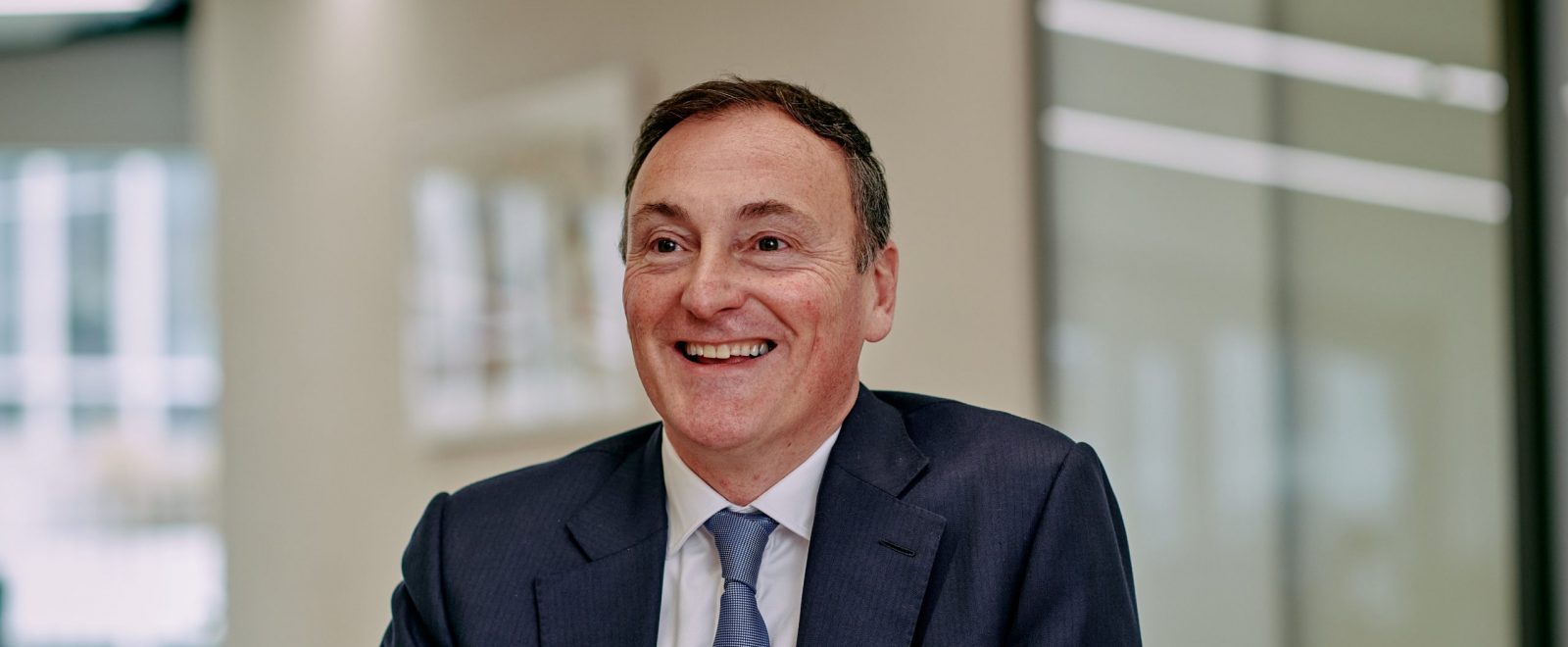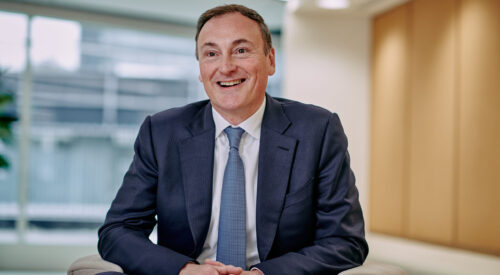In brief
- A structural shift towards increased private debt allocations
- International growth opportunities for ICG and private markets more widely
- Alternatives is a very long-term looking industry where plans are made decades at a time and are not so reactive to the current market environment
Highlights
Benoît Durteste’s comments have been edited for brevity
Strengths and weaknesses of alternative asset classes
In the current environment, private debt strategies are thriving, essentially because higher interest rates, low defaults, because even if economies are not thriving, they’re also not doing so poorly. I think the challenge today is anything that touches on equity, particularly in corporate equity, because we could have a very long debate about where valuations should be.
US and European private markets
There will be significant differences between Europe and the US. Leverage levels tend to be much higher in the US, at least if you’re looking at reported EBITDA. And for reasons I’ve never really understood private equity sponsors in the US never hedge the interest rate. Whereas in Europe they do generally – they’re compelled to do it by the legal docs, which means that it’s giving more time for companies to address to the new rate environment. This is why I think we’re going to have a difference in outcome between the two continents. But having said all that, there are some advantages to the US as well.
Flavour of the month or a structural shift?
If you look at most investors, their allocation to alternatives is heavily weighted towards private equity. Then potentially secondaries, maybe infrastructure and private debt is much more recent with a few exceptions. Therefore, there’s a bit of a catch up – a rebalancing – and looking at their portfolio over a longer term, saying, “maybe I have a disproportionate allocation to private equity, I should perhaps have more in real assets and in private debt”. We’re experiencing some of that as well. There might be some momentum and there’s something about private debt being a flavour of the month. I think there’s also something more structural as people are looking to become more sophisticated within the alternative asset space and looking at the long term, asking: “What should my allocation be in the each underlying asset class?”
Shifts in government policy vs longer-term trends
We try to avoid making investment decisions based on an assumption on regulatory evolution – businesses that are heavily dependent government decisions and policy. We are more wary precisely because of the unpredictability of it. Now you can try to identify longer term trends. We recently launched a life science team because there’s clearly a trend within Europe, in the UK, to push towards life science, and that seems to be more structural. That sounds more like a trend, but in other areas, particularly in some areas of healthcare, policy can change from one government to another, from one country to another. That’s something we’re quite mindful of.
Offshoring and friendshoring
For the for the first time in a long time, industrials are becoming an investment theme again, in Europe in the US as well. That hasn’t been the case for quite some time. I think you’re going to see it more and more. So in future vintages, I think the share of industrial companies within portfolios is going to increase, which is probably a good thing because they these tend to be a good investment. They tend to be more predictable, you tend to have assets, which you often don’t in services businesses. So I think that’s actually a positive development. I think there is a very Western view that things are being pulled out of Asia and that’s not really what’s happening. What’s happening really – if we’re looking at our portfolio companies – they are diversifying. So if they are all sourcing from China, they are diversifying, but they’re diversifying by going to Indonesia by going to Vietnam, maybe to Mexico depending on where they are. But so, as a result, if you’re looking at the Asian region, if you’re looking at China, then you might have that question. If you’re looking at Asia as an overall region, you’re not seeing that at all. If anything, we’re seeing strong growth in Southeast Asia and in India, and there’s very strong growth in in these regions.
Global growth opportunities
We have quite a few offices. We are in Singapore, Hong Kong, Australia. We’re not in India, for instance. So that’s a question mark. Should we position ourselves in India at some point, given that we’re still mostly deal focused? I’m absolutely convinced that there’s going to be an opportunity in Africa in in the coming decades. You don’t want to be too early, but there’s going to be a significant opportunity there as well. We’re constantly thinking about what’s the state of the market there – the legal framework, should we be a first mover, should we wait for others to lead the way?
Sustainability and value creation
We’ve taken the view quite some time ago that we did not want to launch a Green Fund, for lack of a better word. We much prefer to weave ESG (environmental, social and governance) principles throughout all of our strategies. You cannot do it in the same way in a senior direct lending fund than in a fund where you have an equity holding and have greater influence on management decisions. But nevertheless, you can apply some key principles across the board. We signed up to science based targets because I like to be able to measure things and not just have big statements. We have a Sustainability team who don’t just work on implementing KPIs and putting in science based targets, but actually look at what are the short, medium and long term benefits – and sometimes profit benefits to the business. We have a company in Spain for instance which put in place their own energy production through solar and biomass and did it right before energy prices skyrocketed. The amount that they saved through doing that was enormous. That’s a great example of a situation where you’re marrying an ESG objective with a profit mindset and certainly value protection. Actually, in a number of instances, value creation can be completely compatible with an ESG or sustainable agenda.
Management fees and the fundraising environment
This is not really been a challenge that we’ve had at ICG. We’ve seen a number of market participant internalise everything. I think we’ve had the luxury and the benefit of having a market that’s kept on growing, where there are always new investors propping up. In the current market environment, the fundraising environment is wholly more difficult because a number of investors don’t have that much capacity available. But then suddenly you have the Middle East awash with cash and going significantly into private markets and into private debt particularly which they weren’t in at all before. Japan is opening progressively with enormous players. They are coming into the market and that’s before we start touching on the wealth management piece, which people are just scratching the surface on. I think there are some hurdles there. We’ve benefited from relatively strong tailwinds, of being an established player with a relatively broad platform.
Alternatives’ future
If you’d asked me 10 years ago – “How big do you think your private debt fund can grow?” – I would have been wrong by a huge margin, essentially, because I thought that you could only operate in the mid-market. What’s been happening is the private market has gained more and more market shares and the deals have kept on getting bigger and bigger. By the way, it’s true in private equity as well. You’re clearly seeing a shift from public equities to private equity. Essentially the market opportunity has grown at least as fast as the capital coming into the space. That will change at some point but I’m not seeing that. The alternative asset space has grown, but it’s still relatively small in the scheme of things. And it’s not so easy to grow. When we try to organically grow a new strategy, it takes 10 years now, to have a strategy that’s actually profitable, that’s a reasonable size. As a result, there are some inherent constraints to the growth of the asset class because it’s not so easy to establish a a track record, be able to raise significant amounts of money, have the right team in place. It’s not such an easy thing to do.
Outlook
Private markets, for most asset classes, are very long term strategies. And so, of course, there’s the immediacy of where are we in the crisis, what’s going to happen over the next 12 to 18 months, but fundamentally, you’re investing in strategy that is there for 10 years, and that’s how you need to think about this. Trying to time vintages is impossible. And so you need to think about your portfolio allocation, the way you manage a team and the way you put a team together. This is a very long-term looking industry where you’re thinking in periods of 10 years. To me that’s a key element.
Go deeper
- Explore the ICG global platform
- Discover Benoit’s own, flagship strategy and its European mid-market and Asia-Pacific teams
- Read our latest research and market analysis
















